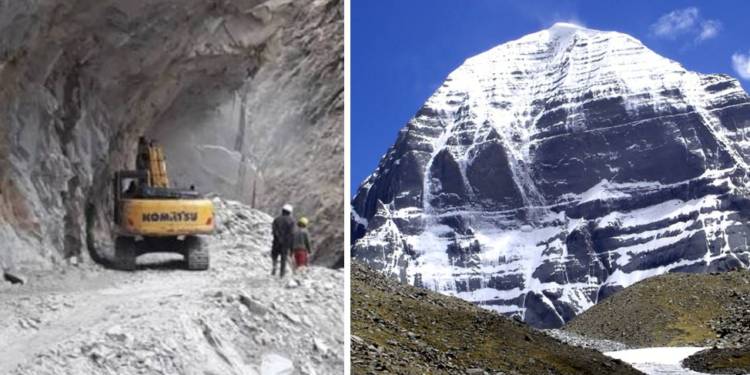In this year’s budget, India’s Finance Minister Nirmala Sitharaman had reiterated Modi government’s commitment to build 2000 km of strategic highways over the next five years, and in line with this commitment, India is going to construct the Dharchula-Lipulekh road link, which will be the shortest, fastest and most comfortable route for pilgrims to reach Kailash Mansarovar in Tibet (held by China).
This road link is a major shot in the arm for Modi government’s plans of bolstering road infrastructure along the Line of Actual Control (LAC)– the de facto border between India and China.
Defence Minister Rajnath Singh tweeted, “Delighted to inaugurate the Link Road to Mansarovar Yatra today. The BRO achieved road connectivity from Dharchula to Lipulekh (China Border) known as Kailash-Mansarovar Yatra Route. Also flagged off a convoy of vehicles from Pithoragarh to Gunji through video conferencing.”
Delighted to inaugurate the Link Road to Mansarovar Yatra today. The BRO achieved road connectivity from Dharchula to Lipulekh (China Border) known as Kailash-Mansarovar Yatra Route. Also flagged off a convoy of vehicles from Pithoragarh to Gunji through video conferencing. pic.twitter.com/S8yNeansJW
— Rajnath Singh (मोदी का परिवार) (@rajnathsingh) May 8, 2020
Apart from creating a shorter and faster route for the pilgrims visiting the holy Kailash Mansarovar, it will also allow India to reach the strategically located Lipulekh Pass at a very high altitude of 17,060 feet, and only 4km away from the China border. With this, India can access this part of the LAC with China in a far easier and more convenient manner.
Last month, the Border Roads Organisation (BRO) had also completed the Daporijo bridge over the Subansiri river, while taking all precautions against the COVID-19 outbreak.
The Ministry of Defence had stated, “This bridge now has the capability to allow heavier vehicles to pass by. It has been upgraded from class 24 tons to class 40 tons. This will not only help the Indian Army’s requirements but will also help in the future infrastructure development requirements of the Upper Subansiri district.”
The bridge is a strategic link as it is crucial for accessing the Line of Actual Control (LAC) between India and China, and the Indian troops stand to benefit in terms of supplies that can now be carried by heavier vehicles.
The overdrive in construction of strategic roads ensuring easier connectivity towards the Line of Actual Control (LAC) has been triggered by Modi government’s decision last year to construct 44 ‘strategically important’ roads along the Indo-China border.
For more than five decades after the 1962 debacle, successive Congress governments had played into the hands of Beijing by not constructing roads along the disputed border with China.
The idea was simple- the past regimes didn’t want to give Chinese troops an easy path in case of another 1962 war-like event. But Prime Minister Modi doesn’t believe in such defeatist mentality, and therefore he has given a major push to strategic roads and solid road infrastructure along the LAC, sending a loud message to China.
Modi government has been building roads in areas that have been flashpoints between China and India in the past. The bridges in Arunachal Pradesh show that India will not take any of China’s bullying and illegitimate claims over the state, which China calls South Tibet.
Post the Dokhlam stand-off with China, the Modi government has also constructed an alternative road link to the tri-junction which has cut down the travel time drastically from over 7 hours to just 40 minutes.
Prime Minister Modi is thus pushing solid road infrastructure along all three sectors of the Line of Actual Control (LAC)- Western (Ladakh), Middle (Uttarakhand and Himachal Pradesh) and Eastern (Arunachal Pradesh and Sikkim).































